An unimaginable loss, an unexpected letter: A heartbroken family’s link to Tom Brady

One is a West Coast boy who went east, the other was an East Coast boy who went west. One is a football player whose career stretches across more than two decades and includes four Super Bowl rings; the other was a baseball player whose life was cut short just as he was finding his promise. They are linked by an uncommon passion for their games, by generosity offered when the lights are off and by diplomas from Serra High School, a private Catholic school in San Mateo, California, a place where the teams are named Padres and the graduates call themselves a brotherhood for life. They are bound together by all these things, and also by a letter—two pages of handwritten prose from a famous athlete, delivered to a heartbroken father on a summer’s day.
One of them is Tom Brady, the most famous football player in America, quarterback of the New England Patriots and husband to a supermodel. He is the handsome, indestructible face of his sport. The other was Calvin Riley, a 20-year-old junior college pitcher with a fastball that was getting faster, a big set of stones in the toughest spots on the mound and a smile that broke down walls everywhere else. People who know Brady and who knew Riley say they were very much alike in spirit. They might have been friends, but they did not have that chance.
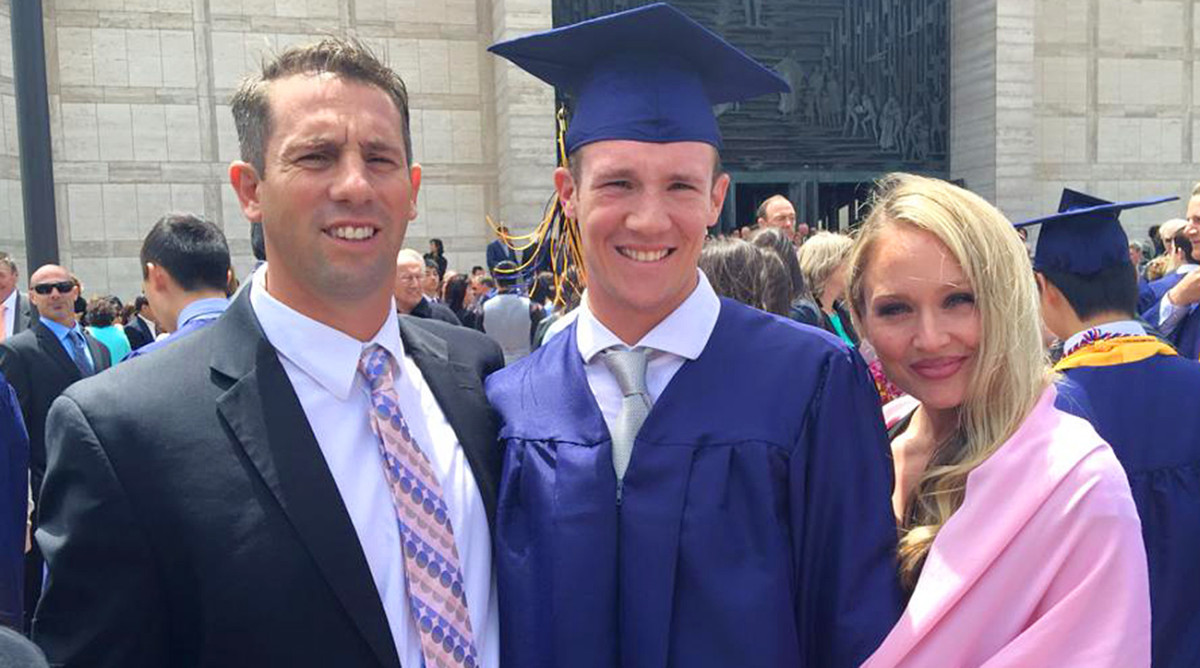
On the night of Saturday, Aug. 6, Riley was shot in the back and killed while playing Pokemon Go in a San Francisco park. A bullet fired from 15 to 30 feet away struck his shoulder blade and sent fragments into his heart, ending his life instantly. The murder remains unsolved, but it is presumed to have been a random act. More than 1,000 people attended Calvin’s funeral six days later at St. Gregory Catholic Church in San Mateo, many of them young people in shock, pulled loose from their emotional moorings by an unexpected lesson in mortality and the loss of a beloved friend who lived larger than most of them and brought so many others along.
“Calvin had this enthusiasm, this thirst for life,” says Fr. Joe Bradley, the Catholic priest who celebrated Riley’s funeral mass and who has been a member of the Serra High community for 25 years, a friend to both the Riley and Brady families. “The young people who came to the vigil and to the funeral mass, they came over to me and they were really, really shook.” Calvin was buried in his Serra baseball uniform, No. 9, a number that will not be worn again.
Not long after the funeral, the letter came to the home of Sean and Kariann Riley, Calvin’s parents. It was delivered by John Kirby, a close friend of the Rileys and also a high school teammate of Brady’s, a wide receiver who caught about 40 passes in his senior year from the tall, lanky kid they all called – and still call—“Tommy.” The Rileys read the letter and then Sean Riley called Fr. Bradley. Everybody calls him Father Joe.
“Father Joe,” said Sean. “You won’t believe who wrote a letter to us about our son.”
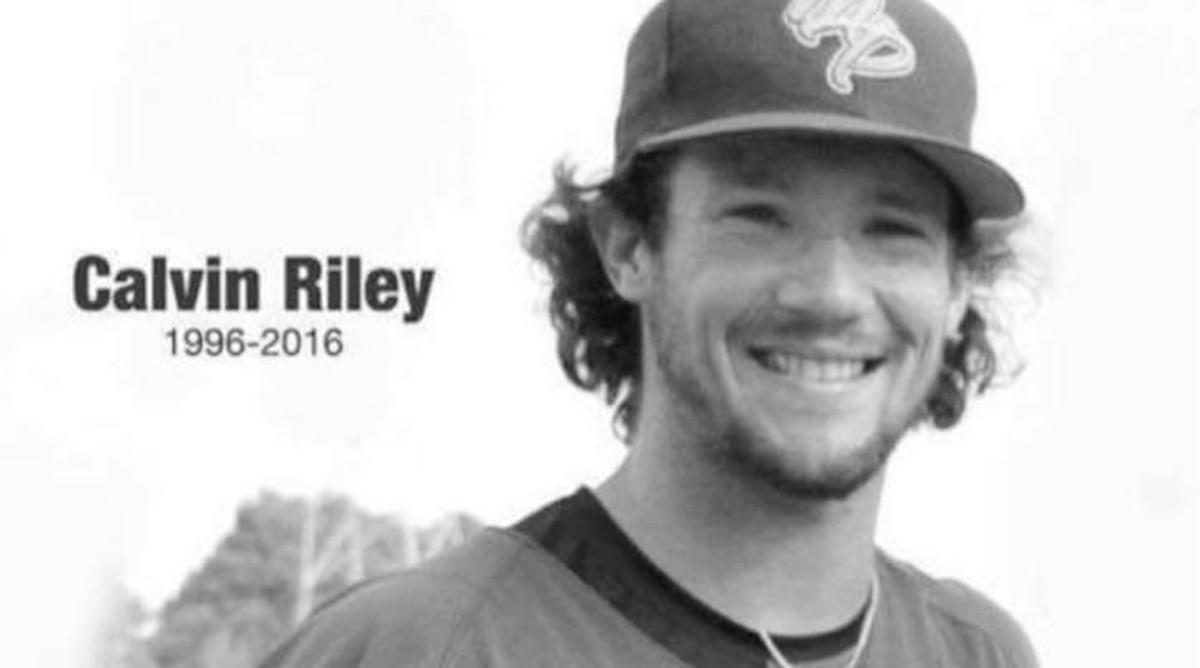
This is the story of an unspeakable tragedy and scars that won’t ever fully heal, and of the small act of kindness and consolation that followed. It is the story of a young man in the wrong place at the wrong time, taken away senselessly and much too soon. And it is also the story of a superstar who has never forgotten his roots and who has come to understand the force of his words and the power of a hand placed gently on the shoulder of another human in pain. It is a little piece of sports and a big chunk of life.
It begins in Boston. Or more precisely, it begins in Lowell, Massachusetts, a hardscrabble former mill town on the Merrimack River 30 miles northwest of the city. It was in Lowell that Sean and Kariann Riley began raising their family. Calvin was the oldest of three children, followed by Justin (now 18) and Bria (now 10). They were as Boston as a family could be, and loyal fans of all the city’s sports teams: The Bruins, the Celtics, the Sox and most of all, for the last decade and a half, the mighty Patriots, and most of all among the Pats, the quarterback who wears No. 12. This was especially true of Calvin. “My kid loved Tom Brady,” says Sean Riley.
Sean and Kariann both worked in real estate, but Sean was also a baseball coach, his real passion. In the summer of 2011, he took one of his players on a recruiting trip to Northern California, and brought his family along for a mini-vacation. As the family prepared to return home, Hurricane Irene hit the East Coast and delayed their travel. Days passed and the Rileys, particularly Sean and Calvin, began to embrace their temporary home. “At first we were stuck,” says Sean. “And then we just fell in love with the community, the people, the weather, everything.”
When the hurricane passed, Sean sent his wife and two younger children home, while he and Calvin stayed behind. Sean enrolled Calvin at Serra, not just Brady’s alma mater, but also Barry Bonds’s and Lynn Swann’s and Gregg Jefferies’s. The first semester of 2011-’12 was already underway, so Calvin started late. Father and son couldn’t get into an apartment until Sept. 1, so for several days, they slept in their rental sedan, took showers at the College of San Mateo and then played catch in a nearby park before school. Sean was only 36 years old and Calvin was 15; they were like college kids on spring break. Soon thereafter, the rest of the family joined them, making the move permanent.
“He had no airs about him. He just loved to play ball, and he loved his teammates and the ritual of preparing to play. He just had this joy about him.”
Kariann started working in real estate and Sean got a job as an assistant baseball coach at Serra. He also worked as a substitute teacher and in the transportation department. The Rileys have Boston accents from central casting, but the Bay Area is flush with technology transplants and deeply diverse. They were welcomed and quickly sank roots. At Serra, Calvin flourished. He became the baseball team’s starting shortstop as a junior and as a senior was also one of the starting pitchers. Practice every day kept him close to his dad. “They had an awesome father and son relationship,” says Serra baseball coach Craig Gianinno. “Sean was more than a father to Calvin. They would work together, then work some more, then work when nobody else was working.” After practice, father and son would play fierce, one-on-one basketball games.
As a senior, Calvin pitched a complete game victory over public school rival Burlingame High, under the lights on the opponent’s field. “He was competitive, like the best kid on the Little League team,” says Gianinno. “But he was composed and mature, too.”
And there was a love of the game, at all times. Fr. Bradley remembers sitting next to Calvin in the dugout at a March scrimmage.
“Calvin sits down next to me and punches me on the shoulder and says, ‘Watch this,’” says Bradley. ‘“It’s a hit-and-run and we’re gonna go from first to third.’ Sure enough, our guy hits the ball to the right side and we go from first to third and Calvin is jumping up and down and banging the roof of the dugout. And this wasn’t in the state finals in May. It’s in a March scrimmage game, and it’s cold and windy. But that’s who Calvin was. He had no airs about him. He just loved to play ball, and he loved his teammates and the ritual of preparing to play. He just had this joy about him.”
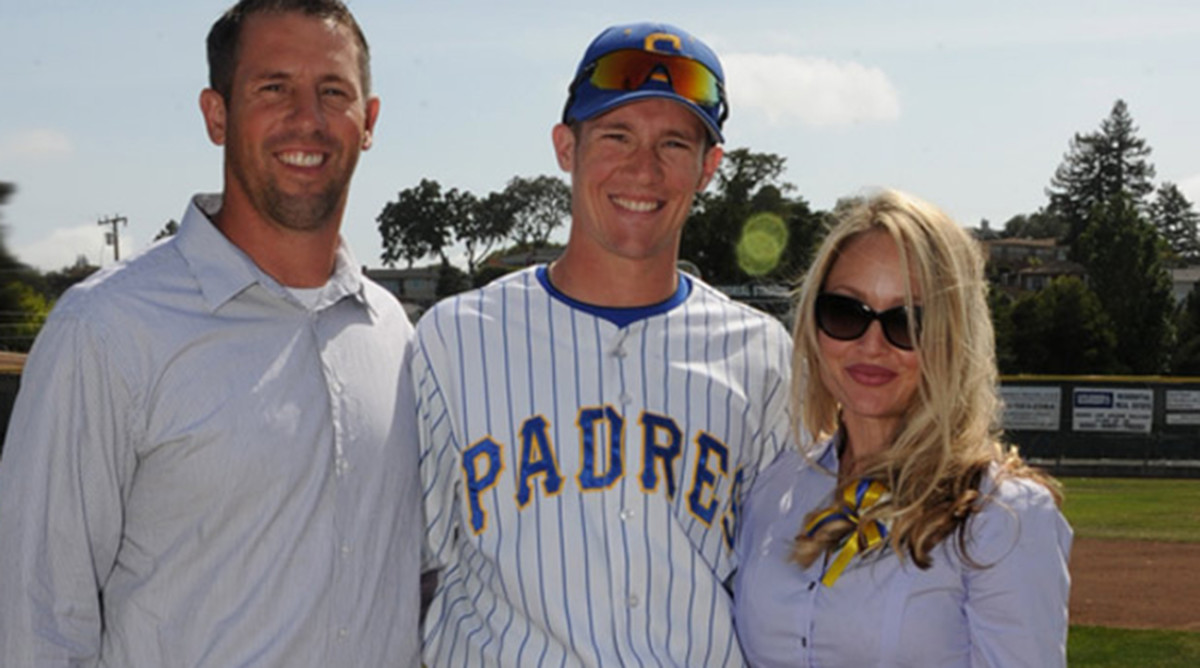
The joy was everywhere, not just on the baseball field. “Calvin loved people,” says Gianinno. “I saw him interact with people from age five to age 85. He was the same. And he was the same when nobody was watching, which is when it really counts.”
Serra football coach Patrick Walsh says, “Calvin had this exuberance about him. He was what we call an all-in kid. He was all in on sports and school and life. Everybody at the school just liked to be around him.” Walsh pauses, and then adds, “I’m just saying, they took the wrong kid that night in the park.”
Reed Peters, a baseball lifer who spent four years at Class AAA in the minors but never got a shot in the big leagues, is the coach at San Joaquin Delta Junior College in Stockton, California, a strong program that regularly sends players to Division I colleges. In the spring of 2015, Peters was watching his son play against Serra and couldn’t help but notice the opposing shortstop. “Switch-hitting shortstop with a good arm, played the game the right way,” says Peters. “He really got after it.” Peters doesn’t usually recruit kids out of San Mateo. “It’s mostly wealthy kids, and we’re a junior college in Stockton,” says Peters. “But Calvin was a hard-nosed kid.”
At first, Calvin sat on the bench at Delta, while Peters figured out where to play him. But even there, he made an impact.
“He was this Irish kid with an East Coast sense of humor,” says Peters. “Everybody loved him. Even though he wasn’t playing at first, everybody gravitated to him. That’s really hard to do.”
Then he did play, as a relief pitcher, and then as the team’s closer, during a run all the way to the California junior college final four. His walk-up music was the Boston anthem “I’m Shipping Up to Boston” by Dropkick Murphys. Calvin would hop sideways over the baseline en route to the mound. “Then he would go through this whole routine to get himself fired up and it got the whole team fired up,” says Peters. “His vision wasn’t the best, so he would be out there squinting to see the signs. He probably threw the wrong pitch half the time and still got guys out.”
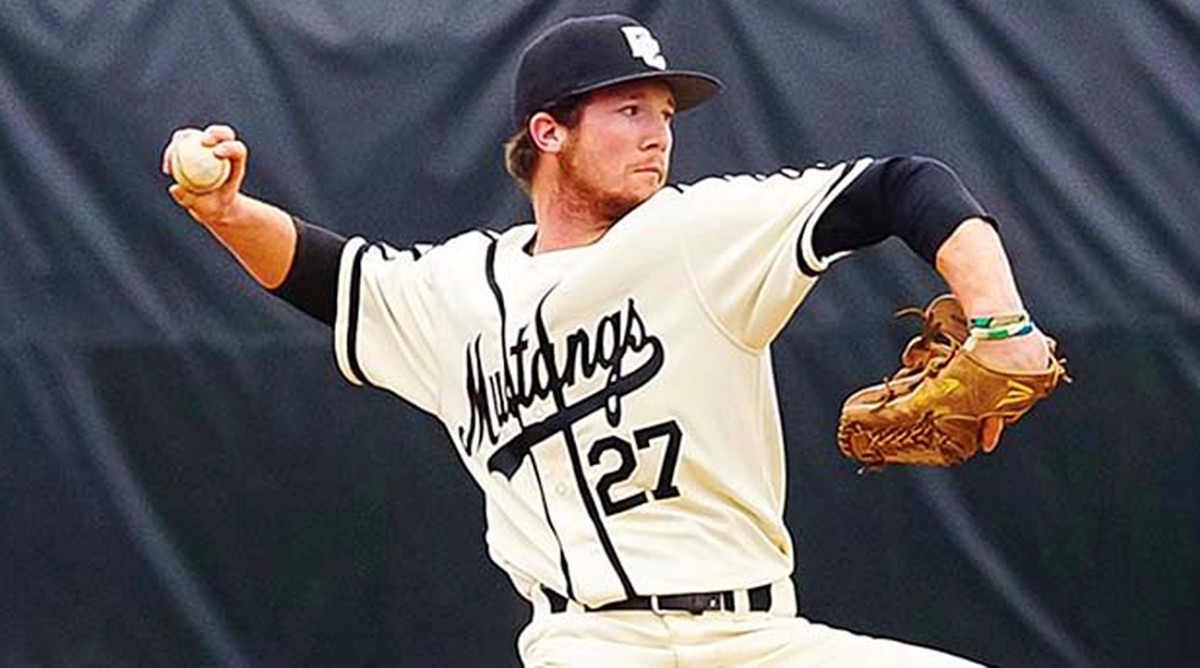
Riley arrived at Delta at 6' 1", 175 pounds, throwing 84 miles per hour and left pushing 190 and 90. Division I programs were sniffing around. He had a good chance at a scholarship somewhere.
He played baseball for most of the summer, before finally getting a break in early August. A friend from Lowell had been visiting for a while and on the night of Aug. 6, Calvin took him out. That afternoon, they were juggling three options: Jake Arrieta of the Cubs pitching against the A’s in Oakland, a Kenny Chesney concert at Levi’s Stadium in Santa Clara or a night in the city, including playing Pokemon Go, which was a nationwide craze at the time. They chose the city. “Which was weird,” says Sean Riley. “Because he never goes into the city.”
Calvin was on the ground for only a few minutes, in Aquatic Park, not far from the tourist maelstrom of Fisherman’s Wharf, when he was killed.
Sean and Kariann Riley were at a restaurant, eating dinner with friends. “I got a phone call from my younger son,” says Sean. “He told me there’s somebody from the coroner’s office at the door and he wants me to come home. I wouldn’t come home until he told me exactly what happened. He told me my son was murdered. It’s a nightmare.”
According to Capt. Jerry Marshall of the San Francisco Field Office of the U.S. Park Police, Calvin was walking along a concrete path adjacent to the beach in Aquatic Park between 9 and 10 p.m., when he was shot. “There was light visitation in the area,” says Marshall, “including others playing Pokemon Go, which was very popular in that area last summer.” Park Police later released a sketch of the possible killer, described by Marshall as, “an African-American or Latino male.” Marshall said the Park Police have continued to develop leads on vehicles which might have been used in the shooting. Sean Riley said that investigators told him that Calvin’s murder might have been a gang initiation. There was no confrontation, no robbery and no indication that Calvin saw his killer. “Wrong place, wrong time,” says Sean Riley.
Several Serra coaches and administrators discussed contacting Brady, who has long been loyal to the school. It was Walsh who ultimately reached out with a text message. Brady had heard about the murder and was anxious to help. Walsh provided some of the background and also told Brady about the connection between the Kirby and Riley families. Kirby is one of many former teammates who has stayed in loose contact with Brady over the years. The two men talked. “I told Tommy about the family,” says Kirby. “And Tommy said, How about I write them a letter?”
“That letter, it meant so much. My kid took so much pride in being part of Serra. And he really did love Tom Brady.”
Brady was in training camp at the time, his last Deflategate appeal having been rejected in late July, and his four-game suspension awaiting. His letter arrived at Kirby’s house and Kirby hand-delivered it to the Rileys. They did not know it was coming. “Then I get it, and it’s just surreal,” says Riley. “Tom Brady. And it’s two pages, handwritten. It would have been easy to send a card or an email. It tells you what kind of human being he is.”
Riley declined to share the exact content of the letter. But when asked if it provided comfort, he says, “Of course it did. It celebrated the life of my kid. Tom talked about the brotherhood of the people at Serra, what a special community it is. That letter, it meant so much. My kid took so much pride in being part of Serra. And he really did love Tom Brady. I can’t say that enough.”
Fr. Bradley, who first met Brady when Brady was a student at Serra and he was just out of the seminary, sees a bittersweet symmetry in the posthumous connection between the quarterback and baseball player. “Calvin and Tommy, as different as they were, and are, really had a lot in common,” says Bradley. “They loved the same things about their teammates and the games. But it really comes down to family. Tom’s parents (Tom Brady, Sr. and Galynn Brady) are some of the kindest, most generous people you could ever meet. And you can say the same for Sean and Kariann. That’s what they share most. When Sean told me about the letter from Tommy, he was very, very emotional.”
Through a Patriots spokesman, Brady confirmed to Sports Illustrated that he wrote the letter, but declined to comment further. “That doesn’t surprise me, either,” says Bradley. “He’s very generous, and I’ve asked him to let me talk about some of the stuff he does. But he just doesn’t want that recognition.”
(A moment here: None of this story is presented to validate that Tom Brady, the quarterback, is also Tom Brady, the saint. It is not meant to traffic in mythmaking or hagiography. It is to validate only that Brady took the time to write a letter that provided a family with comfort in a time of terrible and lasting pain. He could have not written a letter. He could have, as Sean Riley noted, written a card or sent a text message. The world is intensely cynical toward the wealthy and famous, because it easy to ridicule their excesses. This was a moment where cynicism did not apply).
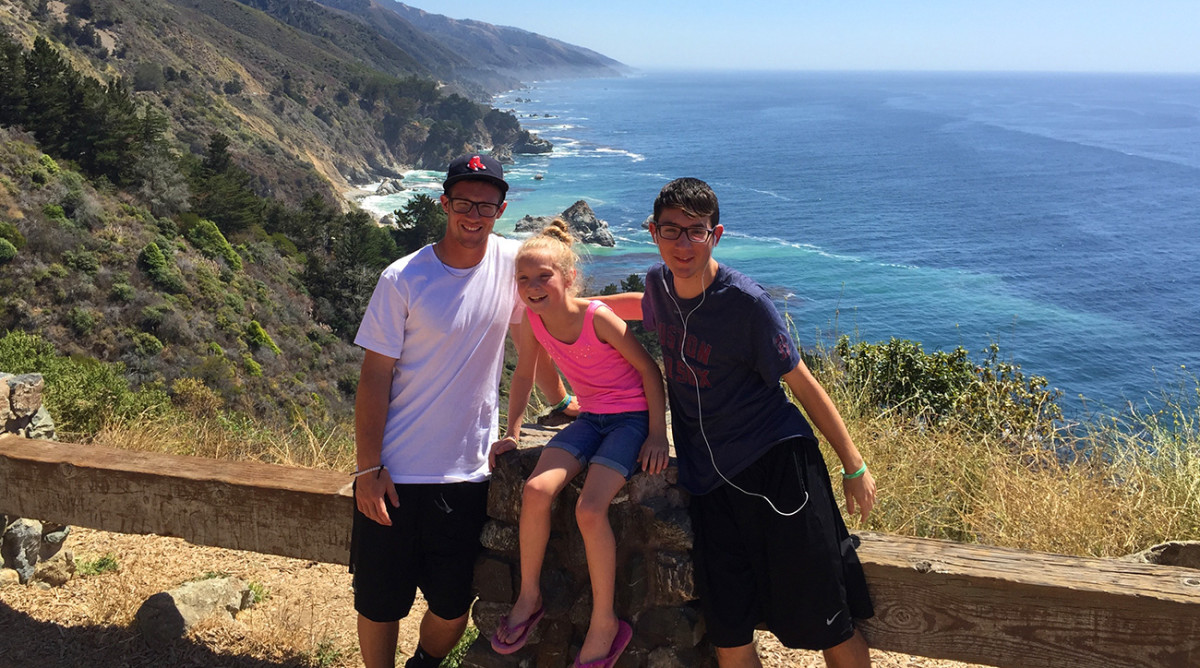
Calvin’s spirit remains alive in many places. His No. 9 is painted on the outfield fence at Delta, where this fall his former teammates would commence every practice by running to the wall and touching the single digit. “Calvin’s death was a shock to our whole team,” says Peters, the Delta coach. “So we go out there and touch the wall as a reminder of how lucky we are.”
The Serra baseball team had T-shirts made with Calvin’s number and initials on the front and the words I’m Shippin Up to Boston on the back. Serra’s football team played the season with a CMR9 decal on the back of the helmet, for Calvin Michael Riley. Sean Riley and Father Bradley spoke to the football team before one of its games. “Just go play,” said Sean Riley that night. “It was a really good, healthy moment,” said Fr. Bradley. “A big moment.”
There is no happy ending in all of this. There are good memories, nursed along and providing solace. But a young man is gone too soon. “I have to move on,” says Sean Riley. “So I try to celebrate my son’s life in a way that helps me get up in the morning.”
There is the pain of loss, the strength of a family made smaller by one and the unflagging support of a community. And there is the letter, delivered across miles and years, bringing a sliver of light into the darkness.
